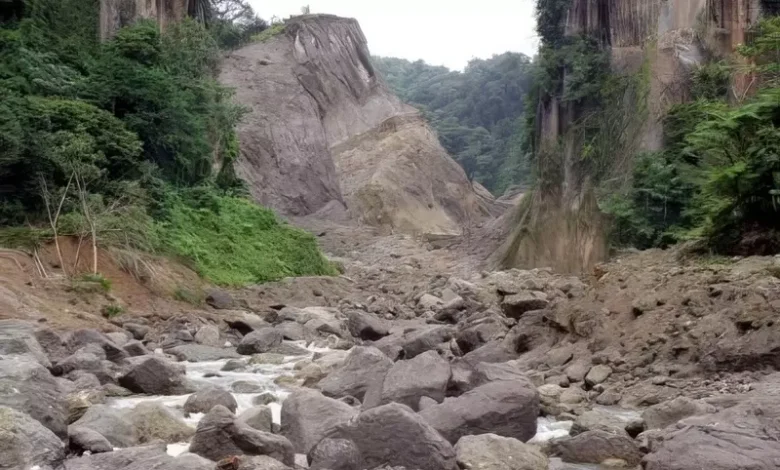Matthieu Landslide Dam

The Matthieu landslide dam was a significant geological event in Dominica, triggered by a series of landslides in November 1997. These landslides created a natural dam on the Matthieu River, forming what residents came to call Miracle Lake.
Formation of the Matthieu Landslide Dam
In November 1997, heavy rainfall resulted in landslides within Layou Valley. That impactful landslide on the Matthieu River led to a natural blockage, forming a lake behind the debris dam. This dam was approximately 200 feet high on its downstream face, a notable size for a naturally occurring structure.
Unlike many short-lived natural dams, the Matthieu landslide dam persisted for nearly 14 years. The lake, Miracle Lake or Matthieu Lake, reached depths exceeding 43 meters. Its longevity was due to the substantial size and composition of the dam and the controlled rate of water inflow from the Matthieu River.
Ecological Impact and Geographical Importance
The formation of Miracle Lake introduced a new aquatic environment within Dominica’s central highlands, affecting local biodiversity and hydrology. It provided insights into the behaviour of natural dams and offered a case study on the impact of rapid geological formations on regional ecosystems.
Breaching of the Dam and 2011 Flooding
On July 27, 2011, the Matthieu landslide dam breached, causing the rapid drainage of Miracle Lake and subsequent flooding in the Layou River Valley. The floodwaters led to significant infrastructure damage, with bridges, roads, and agricultural lands affected. Although there were no casualties, the government declared the Layou Valley an ecological disaster area, with cleanup and repair costs estimated between ECD$9 million and ECD$18 million.




